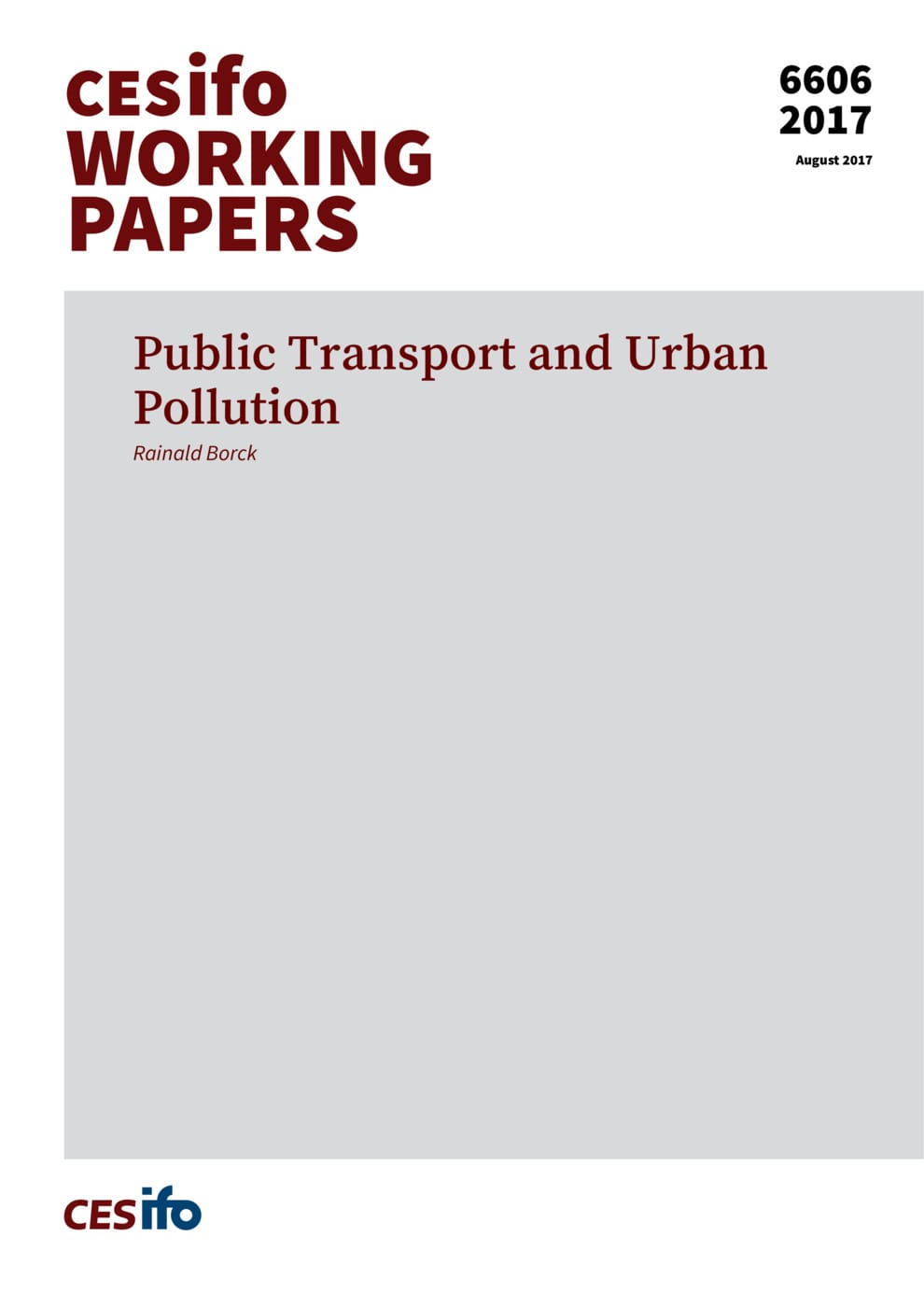Public Transport and Urban Pollution
CESifo, Munich, 2017
CESifo Working Paper No. 6606

The paper studies the effect of public transport policies on urban pollution. It uses a quantitative equilibrium model with residential choice and mode choice. Pollution comes from commuting and residential energy use. The model parameters are calibrated to replicate key variables for American metropolitan areas. In the counterfactual, I study how free public transport coupled with increasing transit speed affects the equilibrium. In the baseline simulation, total pollution falls by 0.2%, as decreasing emissions from transport are partly offset by rising residential emissions. A second counterfactual compares a city with and without public transit. This large investment decreases pollution by 1.6%. When jobs are decentralized, emissions fall by 0.3% in the first and by 3% in the second counterfactual.
Energy and Climate Economics
Public Finance